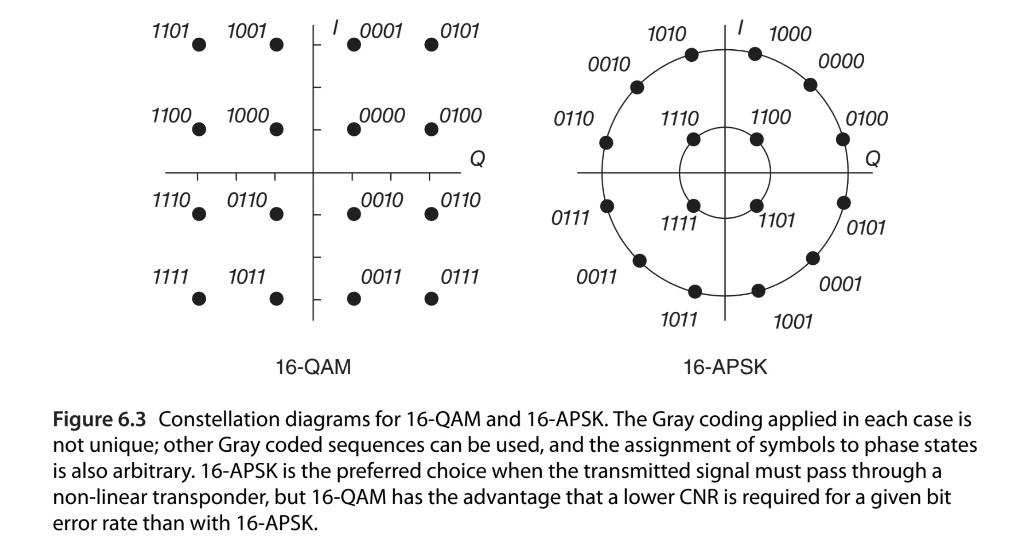Question
6.1 The power in RF waveforms can be compared by assuming that the waveform is supplied to a 1 load. For a sine wave V
6.1 The power in RF waveforms can be compared by assuming that the waveform is supplied to a 1 load. For a sine wave V cos (t + ), the power in the 1 load is ()V^2 watts. QPSK and 8-PSK signals have a constant magnitude V for all symbols, so relative power per symbol is ()V^2 watts.
The 16-QAM and 16-APSK constellations shown in Figure 6.3 have I and Q voltage levels of V and 3V. Calculate the relative power for a 16-APSK signal compared to an 8-PSK signal, and for 16-QAM compared to QPSK, in dB. How do these results relate to the CNR values required for BER of 10^6 for these signals in Table 6.1


Step by Step Solution
There are 3 Steps involved in it
Step: 1

Get Instant Access to Expert-Tailored Solutions
See step-by-step solutions with expert insights and AI powered tools for academic success
Step: 2

Step: 3

Ace Your Homework with AI
Get the answers you need in no time with our AI-driven, step-by-step assistance
Get Started


